Who benefits from Desert X AlUla , the high-profile contemporary art exhibition that launches again this week in the northwest region of Saudi Arabia (11 February-30 March)?
The founding Desert X director Neville Wakefield says: “The premise of Desert X is that it is free and accessible to all; it’s true of California and here. By bringing art into the landscape, there is a point of entry that is more inclusive than that of the white cube. It is easier to engage local audiences in this way simply because there are fewer barriers to entry than with the traditional gallery model."
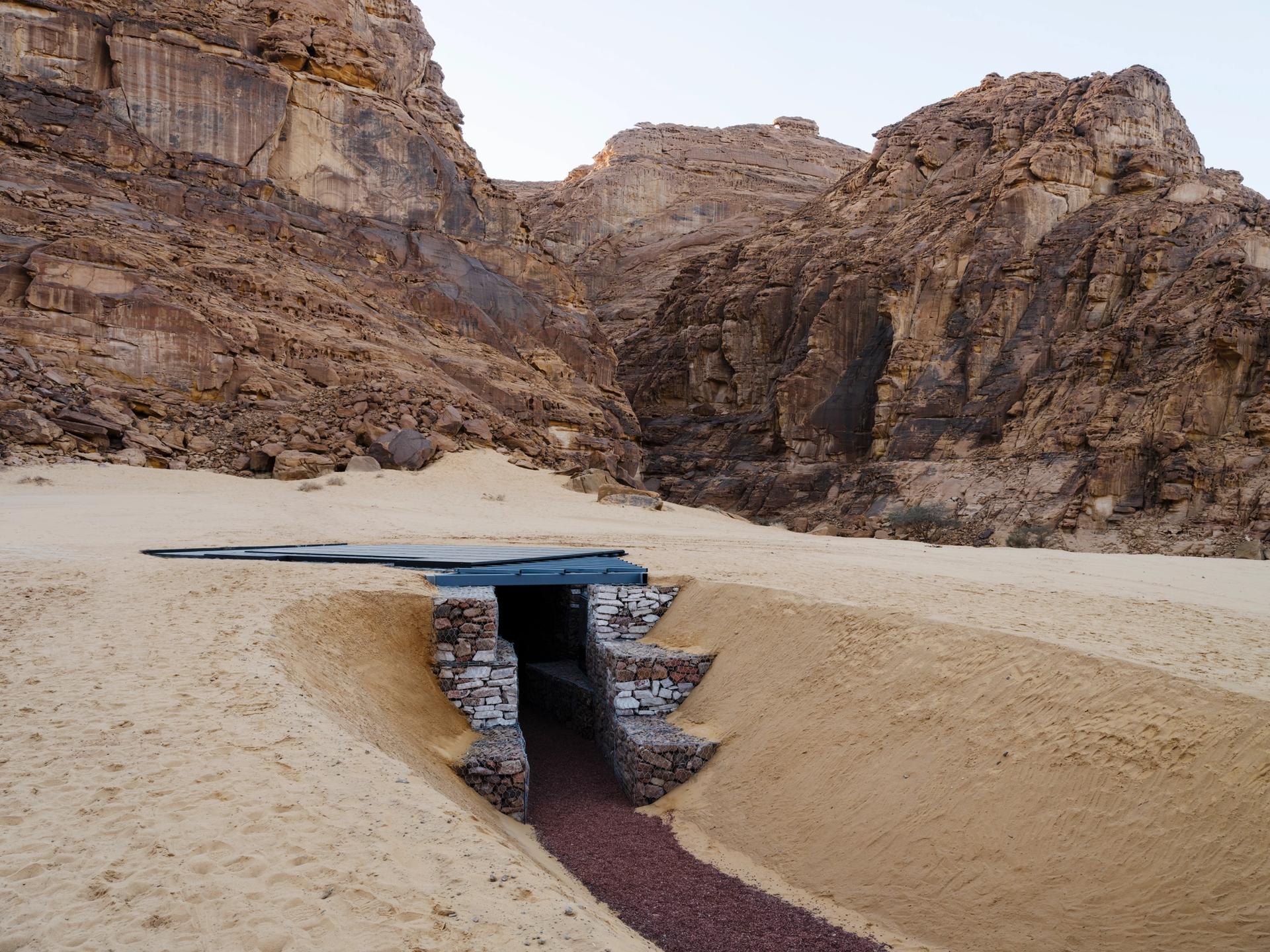
Stephanie Deumer’s Under the Same Sun (2022), Desert X AlUla 2022. Photo: Lance Gerber
For the second edition of Desert X AlUla, site-specific works are again dotted around the region that has been described as a “living museum”, but this time the installations are displayed in a different location. Fifteen works in total are divided across four separate canyons; stand-outs include Canadian artist Stephanie Deumer’s underground greenhouse (Under the Same Sun), which has been carved out of the sand, creating a cool oasis hidden from the searing sun. Serge Attukwei Clottey’s shimmering piece Gold Falls, made from plastic containers used in Ghana for storing water, adorns a rock face, resulting in one of the most dramatic installations in the exhibition.
The Desert X biennial initially launched in the Coachella Valley in California in 2017. The first AlUla edition launched in 2020; this iteration is curated by Wakefield, Raneem Farsi of Saudi Arabia and Palestine-born Reem Fadda. Desert X AlUla has been organised in collaboration with the Royal Commission for AlUla (RCU), the Saudi governmental body led by Crown Prince Mohammed bin Salman.
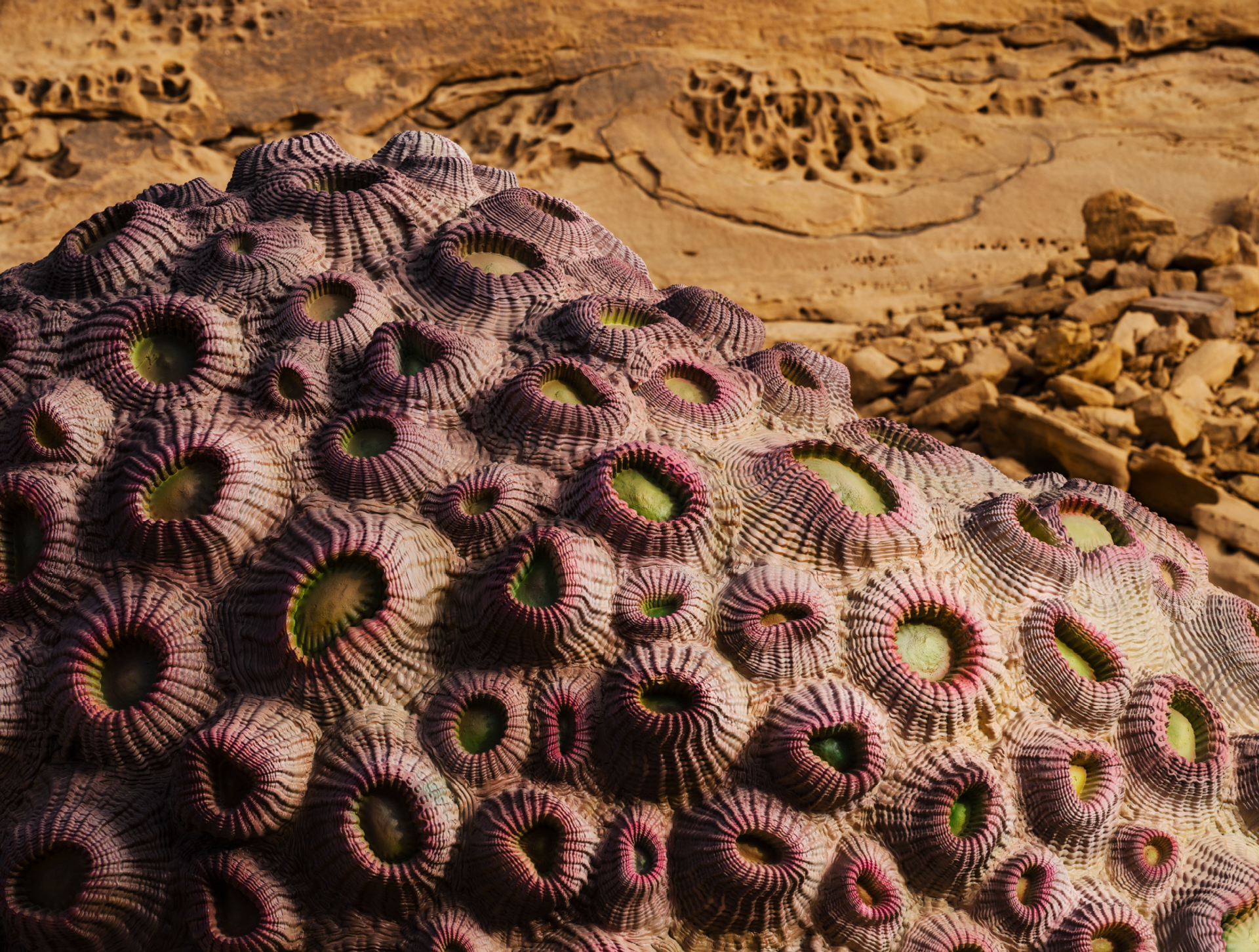
Shezad Dawood's Coral Alchemy I (2022), Desert X AlUla 2022. Photo: Lance Gerber
Shezad Dawood’s duo of sculptural works take on coral-like forms whose temperature-sensitive surfaces reflect the effects of climate change, touching on a topic deemed delicate in a country that was initially accused of blocking progress at the recent Cop26 climate conference in Glasgow. Fadda also discussed the ecological theme during the exhibition press conference, saying that “the ecological alarm bell is everywhere and [some artists] have shown it in the work”.
Saudi artist Dana Awartani’s Where the Dwellers Lay, (2022), is one of the most dramatic pieces on display at the ancient heritage site and seat of several ancient civilisations spanning 200,000 years. It references Nabataean tombs and is meant to look like a “pixelated rock face”, she says. "For many local residents, it will be the first time they’ll be exposed to contemporary art. My driver asked me, what is contemporary art?” she says.
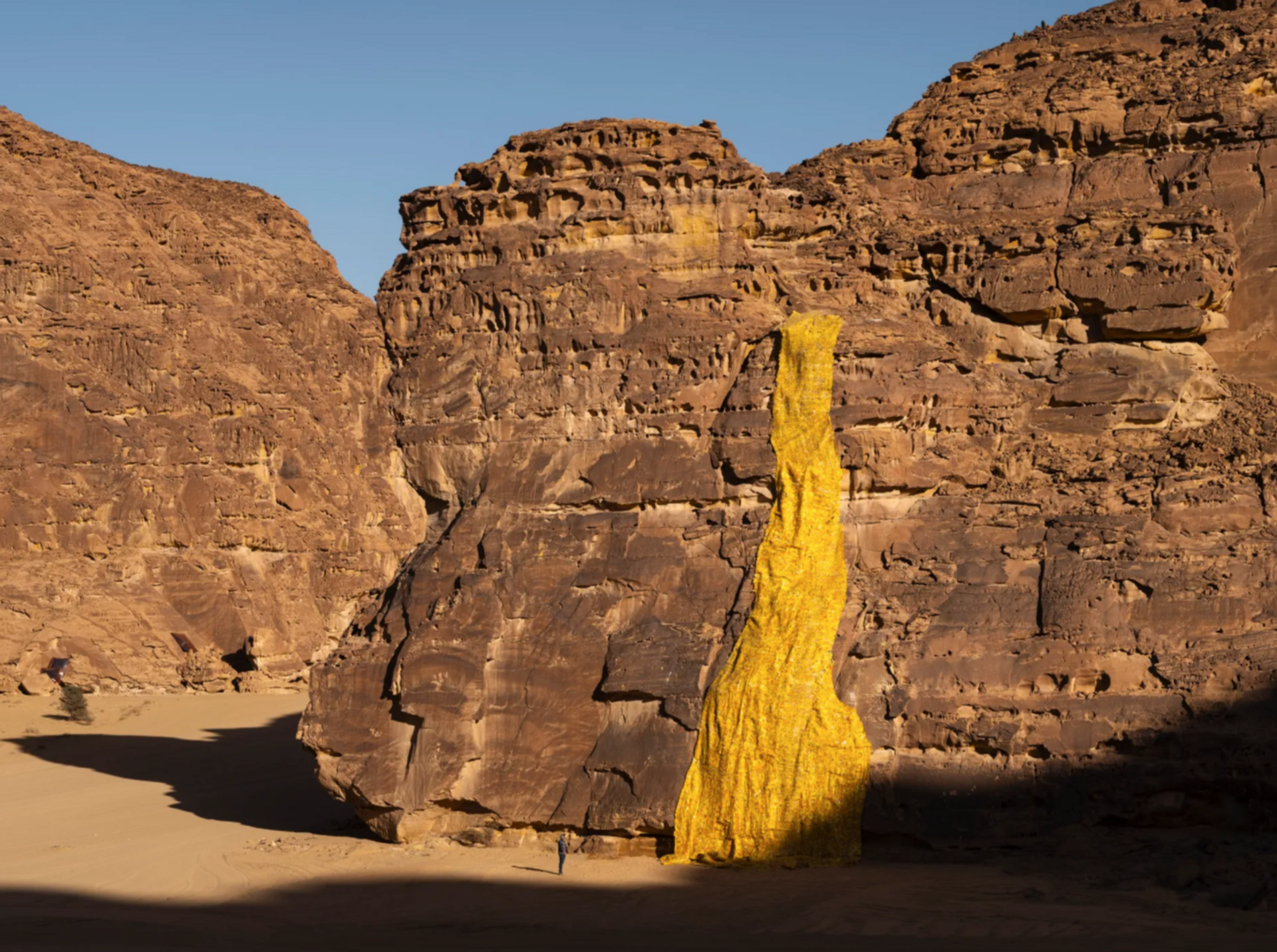
Serge Attukwei Clottey’s Gold Falls (2022), Desert X AlUla 2022. Photo: Lance Gerber
Nora Aldabal, executive director for arts and creative industries at the Royal Commission of AlUla, has said that “we are not a mass tourism destination”, adding that by 2035, AlUla is due to receive approximately two million visitors annually. Marketing AlUla as a high-end destination would limit numbers, preventing the historic region from being overrun by tourists, but could be labelled elitist.
So who benefits?
“We are building the history and narrative [of AlUla] for the next generation… it’s accessible for anyone and everyone,” Aldabal says, stressing that a number of public programmes cater for families and schools. Some of the works were also built with the help of the community (Jim Denevan’s Angle of Repose centrepiece pyramid installation was, for instance, constructed by a small army of volunteers).
The government of Saudi Arabia benefits meanwhile by improving its image through what some commentators have called “art washing” (using art to smooth over thorny issues such as human rights abuses and the ongoing controversy of the journalist Jamal Khashoggi who was murdered in 2018 in Istanbul). Indeed, the influx of international press this week and a notable curatorial contingent reflect how the notoriously conservative country is opening up internationally and diversifying its economy in line with the government’s Vision 2030 initiative.
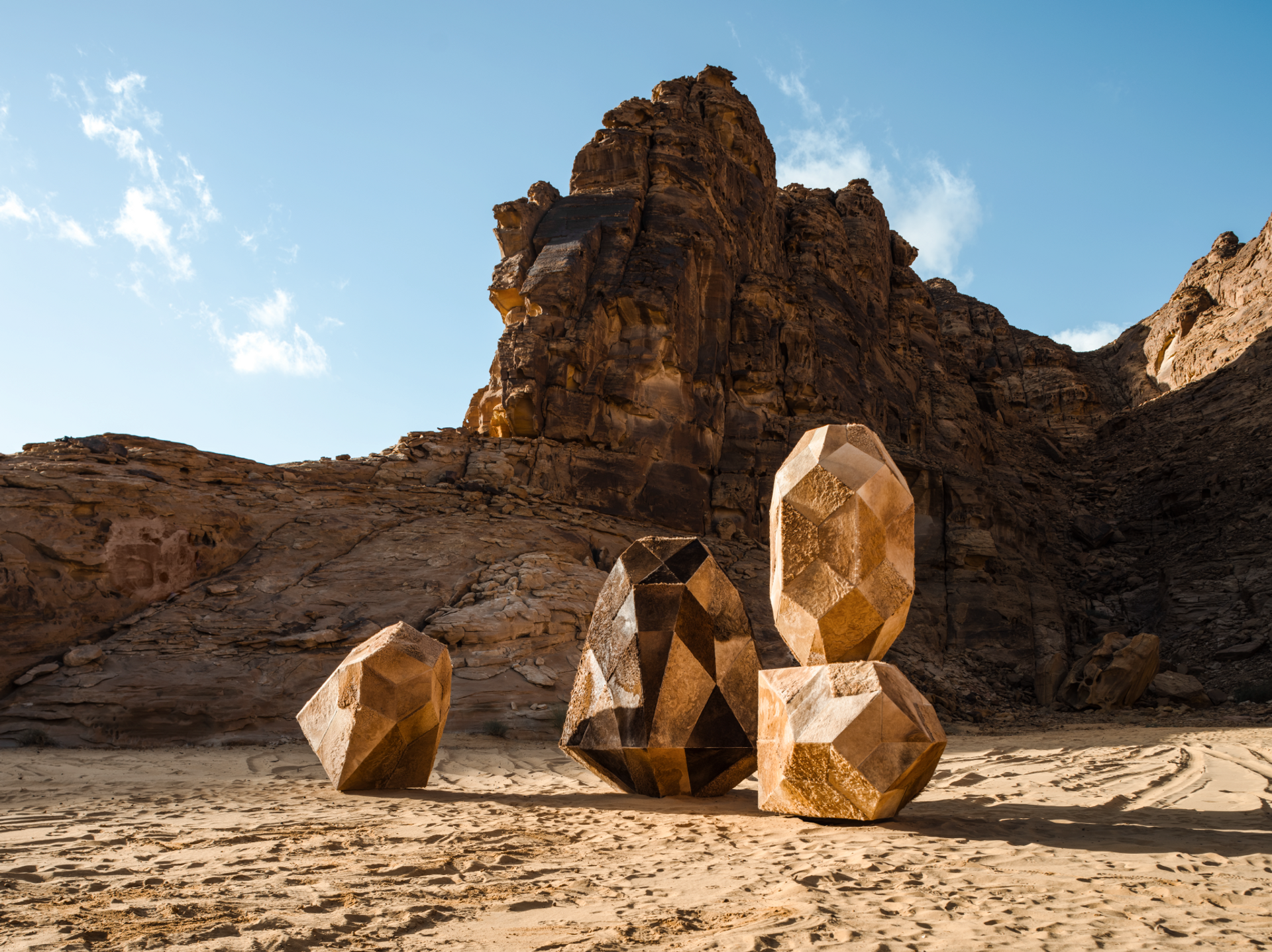
Zeinab Alashemi's Camouflage 2.0 (2022), Desert X AlUla 2022. Photo: Lance Gerber
An arts commentator present at the Desert X launch says that “it is important to remember that being gay here is still illegal but I’m increasingly coming round to the opinion that it is better to have a dialogue between artists, and explore difficult issues here, than not have that dialogue at all”.
“There is a real desire [on the part of the Saudi Arabian government] to weave arts and culture into the fabric of the country which is genuine and not cynical,” says Sumantro Ghose, artistic programming director at the Royal Commission for AlUla. He points to increased provision for art in Saudi secondary schools, highlighting how RCU supports a network of 50 art teachers and is training local residents as AlUla guides.
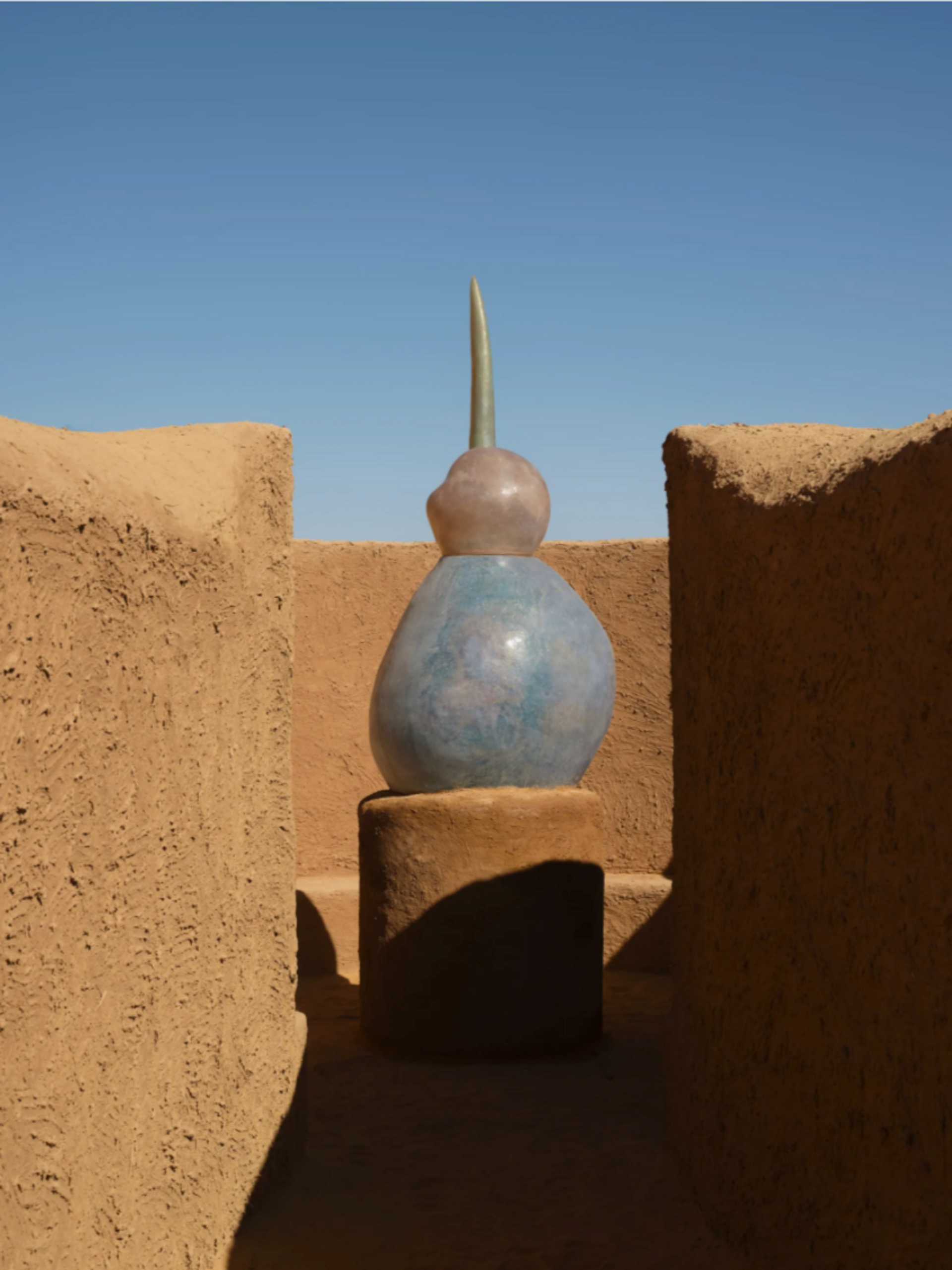
Sultan bin Fahad, (2022), Desert X AlUla 2022. Photo: Lance Gerber
On the ground, it is clear that the country is undergoing a cultural and social transformation: visas that used to require a letter of invitation now take around ten minutes to process online. Neville Wakefield says: “More women were wearing abeyas before so that’s clearly changed. There’s been a huge relaxing of those protocols. Artists have been instrumental in making those changes, they are the thought leaders of the future.”
Since the last Desert X AlUla, grassroots initiatives have flourished, with a burgeoning educational infrastructure developing. Wakefield adds: “There have been enormous developments in community outreach, most notably the Madrasat Addeera initiative and the programmes for school visitation. Last time [artist] Sherin Guirguis made a piece [Kholkhal Aliaa] where she worked with local community weavers but it was hard to make the connection with what was happening at Desert X and traditional practices. There is now more interest in community participation.”


